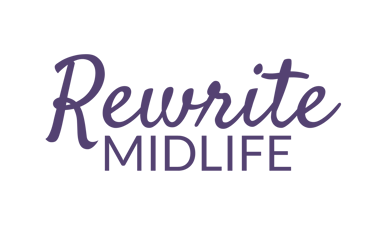Re-thinking roles and identity: what we can learn from ancient teachings
Josie
2 min read
Rewriting Identity: What Ancient Wisdom Can Teach Us About Reinvention
At some point in midlife—whether by choice or by circumstance—we’re invited to step out of a role we’ve worn for years. The job title, the family position, the identity we’ve built our lives around—suddenly, it no longer fits. It’s disorientating. Who are we without that role?
Ancient philosophies from East and West offer a surprising answer: you were never that role to begin with.
The Shaolin Way: Move Through Roles, But Attach to None
The monks of the Shaolin Temple are known for their strength and discipline. But underneath the high kicks and kung fu is a deeply philosophical life. Rooted in Chan Buddhism (the Chinese ancestor of Zen), Shaolin teachings remind us:
“You are not the warrior, the teacher, or the monk. You are the presence behind the movement.”
To a Shaolin monk, roles are masks we wear to meet the needs of the moment. They’re real, but they are not us. One day you’re a fighter, the next you’re sweeping leaves. Neither defines you.
In midlife, this wisdom becomes especially potent. We may have been the corporate leader, the caregiver, the fixer, the good girl. But those were roles—not our true selves.
Why Reinvention Feels So Hard (and How Ancient Teachings Help)
Letting go of a long-held identity feels like death. And in a way, it is. But it’s a necessary one. As the Stoic philosopher Epictetus wrote:
“Don’t explain your philosophy. Embody it.”
Reinvention isn’t just about changing careers or starting new habits. It’s about loosening the grip of the ego—the voice that says “This is who I am. This is all I can be.”
Ancient traditions help because they normalise impermanence. Buddhism, Taoism, and Stoicism all teach us that clinging leads to suffering, while flow and presence lead to peace. If we can release the belief that our value lies in what we do, we create space to become something new.
From Identity to Essence
Midlife is often the first time we ask not, “What do I do?”, but “Who am I without it?”
In Buddhism, there’s a concept called anatta, or “no fixed self.” It’s not about being nobody—it’s about realising that you are not fixed, and never were.
This is incredibly freeing.
Because if you’re not that role, you’re not stuck with its limits. You’re free to evolve, again and again. You’re free to become the writer, the healer, the artist. Or to walk into something unnamed.
A Practice for Letting Go
Write a Role Farewell Letter
Write a letter to a former role or identity you’ve held tightly (e.g., “Dear Career Woman” or “Dear Always Responsible One”). Thank it. Grieve it. Then release it.Ask: Who Am I Becoming?
Don’t rush the answer. Let it emerge. You are composting old stories so something new can grow.Remember: Essence Is Constant
Beneath the surface roles, there’s a consistent thread—your essence: creativity, compassion, curiosity, clarity. Let this be your guide forward.
Rewrite Midlife, Don’t Rewrite Yourself
Ancient wisdom doesn’t ask you to become someone new—it asks you to let go of what you’re not.
When you’re in a moment of change, Shaolin, Buddhist, and Stoic philosophies all say: be fluid, not fixed. Let the old identity fall away. Be the one who watches, adapts, and moves forward with purpose—but without ego.
You’re not starting over. You’re becoming more you than ever before.
What Role Are You Letting Go Of?
I’d love to hear your story—and what’s calling you next.


